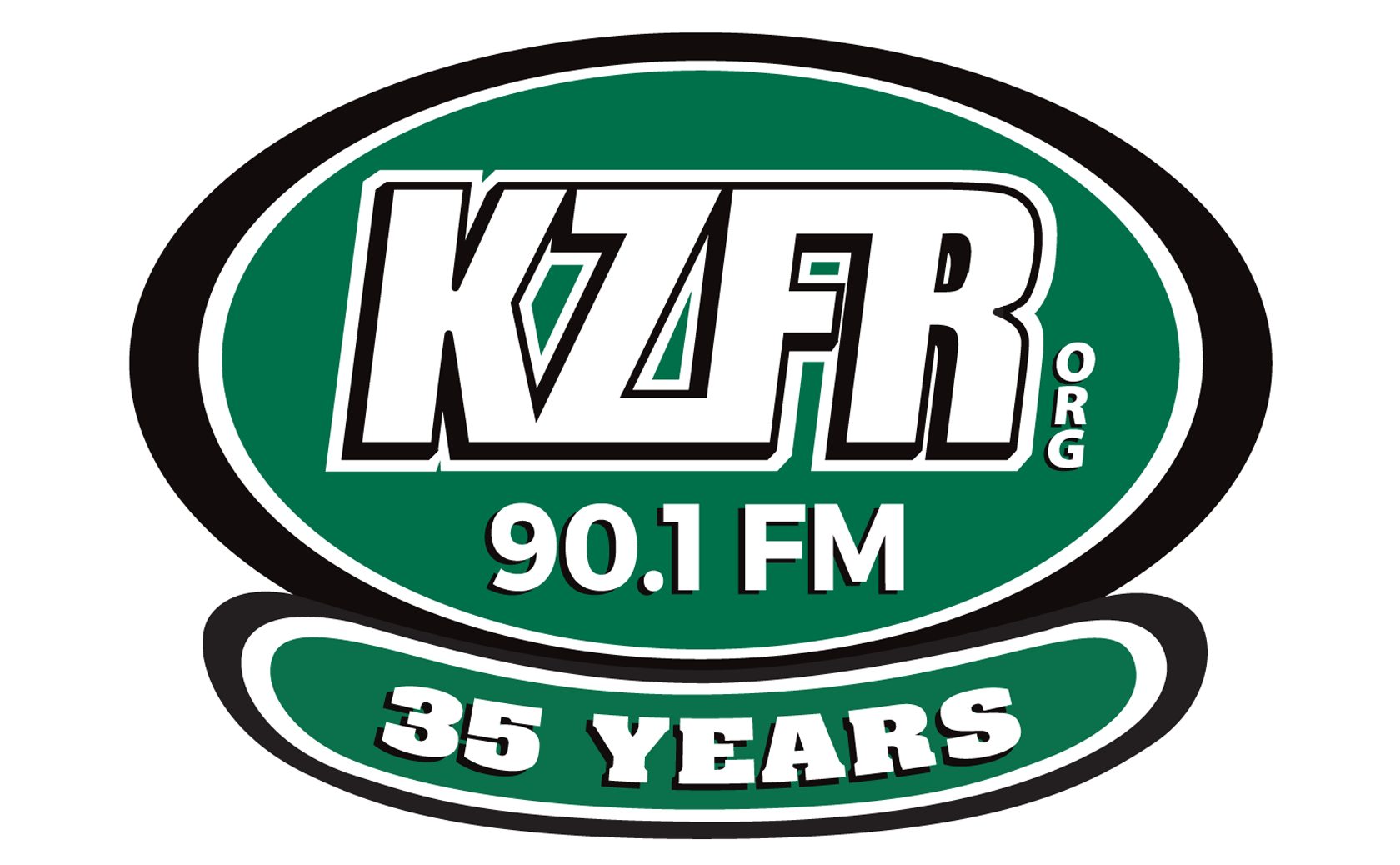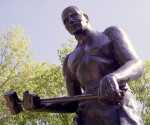The story of John Henry has been a part of America’s folklore fabric for the past 125 years. The hammer pounding, steel-driving railroad tunnel digger challenged a mechanized steam-powered drill and won, only to die when the contest was over. Although it sounds like a fairly typical “tall tale,” the story is rooted around a historical figure and quite possibly a historical event. Real or imagined, it graphically reflects the human condition during the post-civil war Reconstruction Era as newly freed slaves joined the competitive workforce, and laborers in general faced increasing competition from technology.
The Emancipation Proclamation sent thousands of former slaves into the workforce. Many ended up working for abysmal wages in the dust and smoke choked railroad tunnels. They worked naked, in a restricted space with limited visibility, breathing noxious fumes. They had left the plantation enslavement only to find themselves confined within a mountain in deplorable, treacherous conditions. Carlene Hempel points out that “the railroad was an extension of the plantation. Whites were barking the orders; an army of blacks was doing the work. And, for the most part, they had no other option.”
Inside the tunnel steel drivers, also known as hammer men, labored driving holes into rock by hitting thick steel drills or spikes with a nine pound hammer. The hammer man always had a partner, known as a shaker or turner who would crouch down next to the hole and manually rotate the drill after each strike. The holes they hammered into the rock were then filled with explosives that would blast a cavity deeper and deeper into the mountain. Eager to reduce costs and speed up progress the tunnel engineers began using mechanized steam drills and it is from this advancement in technology that the story emerged.
The song clearly reflects the dismal conditions under which John Henry and his fellow workers labored, but as wretched as the tunnels were the song could offer a modicum of hope and reassurance that the tunnel wasn’t a plantation; that a man could outlive the job:
This old hammer
killed John Henry
But it won't kill me, it won't kill me.
Of course the reality was that freed slaves had very limited opportunities for employment and one commonly sung refrain reflects the ambiguity of their situation:
Take this hammer,
and carry it to the captain,
Tell him I'm gone, tell him I'm gone.
In this verse the protagonist could be quitting. Or like John Henry, he could be dying.
The most widespread versions of the John Henry folktale put John Henry and the steam drill in West Virginia’s Big Bend Tunnel in the 1880’s. Big Bend was in itself a legendary tunnel: It took three years and thousands of men to complete. It claimed the lives of hundreds, many of whom were buried just outside its portal. It’s no wonder that the John Henry tale would find a home here.
But in the 1920’s historian Guy Johnson interviewed Big Bend Tunnel workers and could find none to corroborate the competition. Word of his research however spread and he received letters from numerous railroad builders from across the country that placed the contest in a tunnel in Alabama in 1887 or 1888. The letter writers referred to the location of the contest as either “Cruzee" or "Cursey” Mountain, or at Oak Mountain. Just east of Birmingham, the Columbus & Western (C&W) Railroad line (now called the Norfolk Southern) passes through the Coosa and Oak Mountain Tunnels, which are two miles a part. Locally, "Coosa" is pronounced "Koo'see" and is spelled that way on older, historical documents. The letter writers seemed to be referring to “Coosa” as "Cruzee" and "Cursey."
An old railroader informant also provided information about John Henry’s background: He was an ex-slave from Holly Springs, Mississippi who took his former master's surname, “Dabner”. Other letter writers had mentioned the name of the contractors that the steel-drivers worked for: “Shay and Dabney” or “Shea and Dabner”.
Subsequent research by folklorist John Garst shows that Frederick Dabney was Chief Civil Engineer for the C&W Railroad during the construction of their line between Goodwater, Alabama, and Birmingham in 1887-88. He was born in Virginia in the 1830’s and raised in Mississippi, fought for the Confederacy in the Civil War, and afterward settled in Crystal Springs, Mississippi. He came from a slave-owning family and one of his slaves, born in 1844 was named “Henry.” Because the affiliated character and place names are so similar, Garst suggests that this is the real John Henry. If so, he would have been 43 years old 1887, the year of the legendary contest.
Only one informant, C. C. Spencer, wrote that he personally witnessed John Henry’s death in Alabama. He described in rich detail the all-day contest and how John Henry collapsed late in the day. When he regained consciousness he said that he was blind and was dying, and asked for his wife. As she cradled his head, he asked “Did I beat the steam?” and then he died. Its never easy to pinpoint where history ends and folklore begins, but the transition for this story takes place in this general vicinity.
Garst concludes that the events described in the folklore surrounding John Henry and the steel-driving contest took place in Alabama. He points out that there are about a dozen versions of the song which includes lines more appropriate for the Alabama location. He also notes that there are two pre-1930 versions which place John Henry on “the Georgia Line” or on “the Central o’ Georgia Rail Road.” It was in fact the Central Georgia R.R. that replaced the C&W Railway Company along this route, and “there is a strong local tradition among Central of Georgia employees and around Leeds, Alabama, that John Henry raced a steam drill and died just outside the east portal of Oak Mountain Tunnel, between Oak and Coosa Mountain Tunnels. This tradition is as old and strong as that for Big Bend.”
The story of John Henry traveled from coast to coast, carried like cargo and passengers by the expanding railroads. It originated in the oral tradition of “hammer” or “work” songs, evolving into ballad form by the 20th century. Like other malleable folk songs it passed from community to community, its lyrics changing to fit the social and historical context of the performer and audience.
The earliest known published copy of the ballad dates from 1900. Beginning in 1924 it was recorded by a variety of musicians who were separated by geography and musical styling, but who found the story worth telling and an audience who wanted to hear it again and again. Georgia musician Fiddlin' John Carson sang “John Henry Blues” on a 1924 record. Grand Ol’ Opry star Uncle Dave Macon recorded “The Death of John Henry” in 1926. Guitarist and quills player Ragtime Henry Thomas, a black Texan recorded his version of "John Henry" in 1927, and Mississippi John Hurt recorded “Spike Driver Blues" in 1928. These mark the earliest known recordings of the song.
Sources:
John Garst’s “Chasing John Henry in Alabama and Mississippi: A Personal Memoir of Work in Progress” in Tributaries: Journal of the Alabama Folklife Association. Issue No. 5 2002 pp 92-129.
Carlene Hempel’s 1998 “The Man - Facts, Fiction and Themes.” located at: http://www.ibiblio.org/john_henry/analysis_unedited.html







